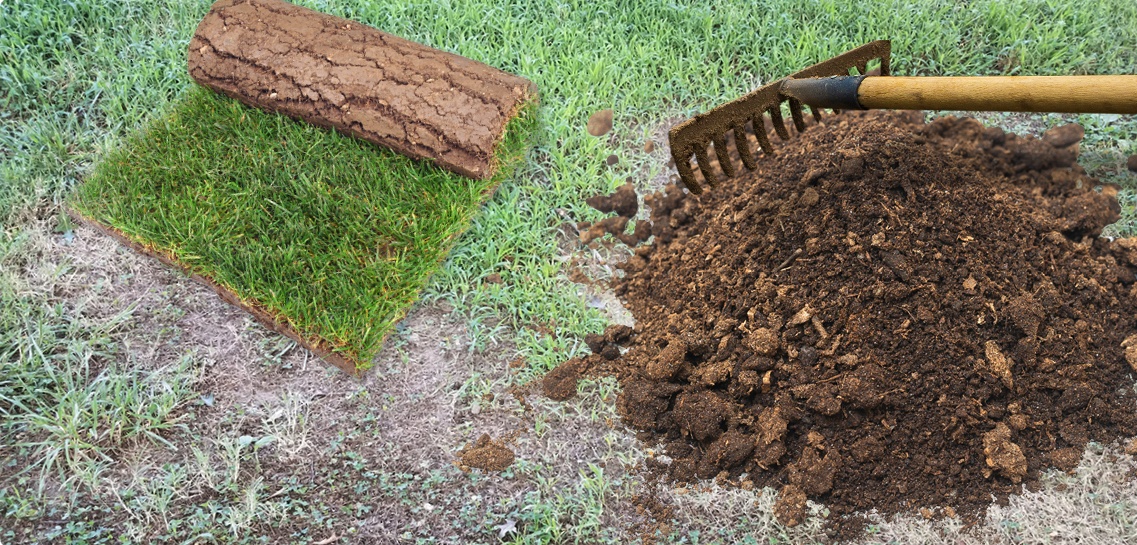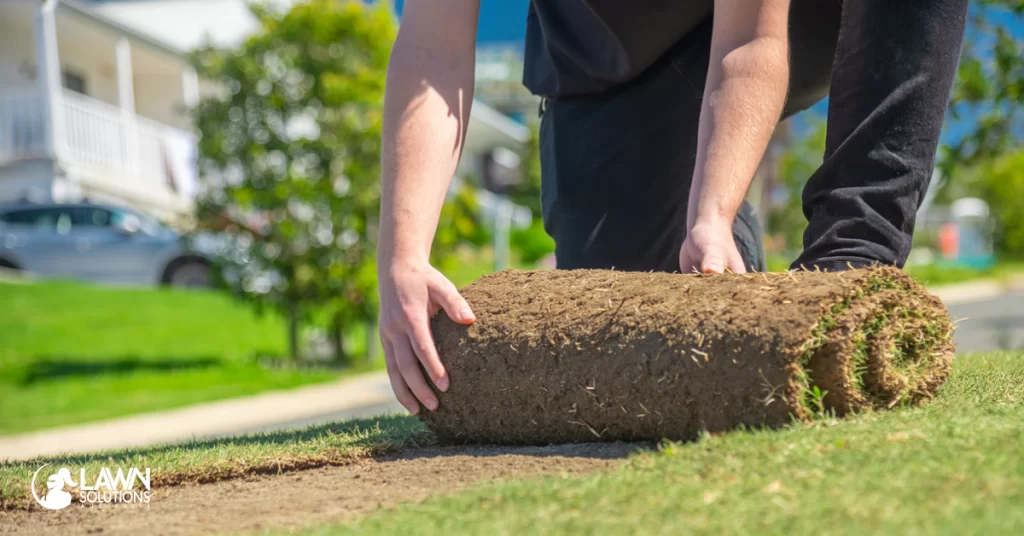How to Repair Bare Patches in Your Lawn

26 January 2023
You pride yourself in a beautiful lawn and for the most part, you have it looking great. But there a few hideous bare patches preventing your lawn from looking it’s best.
Bare patches can occur due to excess compaction in certain areas of your lawn. You will usually find these bare patches on worn paths in the backyard, in a path to the pool, back shed or the clothesline. The excess wear causes the ground to go hard (compaction) making it difficult for the turf to grow a runner through the compacted ground. A good way of looking at it is through the analogy of pushing a screw driver into sand, vs pushing a screw driver into asphalt. The same principal applies with a turf runner trying to grow through non-compacted ground vs compacted ground.
Here are our two recommended methods for repairing bare patches:
Method 1
If your bare patches are fairly small (smaller than an A4 sheet of paper), you can fix these patches without having to buy turf.
- First, de-compact the ground with a chipping hoe or similar, to break up the soil to allow air and nutrients to penetrate. Turn the ground over to make sure it is de-compacted to a depth of at least 100mm.
- Next, level the ground so it matches in with the existing levels. This will provide a nice soft base for the turf to produce a runner and repair itself. To help soften the base further, you can also apply a small amount of sandy top dress to the area that is bare.
- After this, get into a regular program of fertilising and watering whilst the turf is repairing itself. Fertilise every 8 – 9 weeks and water a couple of times a week (you can get away with just watering the bare areas).
Whilst your grass is repairing, it is important to minimise traffic as much as possible. Depending on the time of the year and the size of the patch, the repair process will generally take a couple of months to fully complete.

Method 2
The second method, which is preferred, is to lay new turf to the affected bare area. It is also recommended to use this method on smaller areas as it is quicker, easier, and much cheaper in the long run.
- First, rake out any dead foliage in the bare area.
- Next, similar to the first method, turn over and level the existing soil and bring in new sandy loam (if needed) to bring the ground level up to the existing grass.
- Once the area is prepared, pop down to your nearest LSA accredited turf supplier and pick up the amount of turf you need.
- Cut the turf to the size required (remember when preparing the area to try and make it as square as possible to help with the patch up) and lay it in the bare patch.
- Use any leftover sandy soil to top dress around the edges if you have any to do so.
- Water the new turf in well, as you would a new lawn, and try to avoid mowing it until it has rooted into the ground. Continue watering regularly to keep the new turfs feet wet whilst it is establishing into the ground.

As always, if you have any more questions please don’t hesitate to contact us for free expert advice on 1800ALLTURF (1800255873) or 07 5543 8304.
WOULD YOU LIKE MORE INFORMATION?
Contact us for expert advice, or come & say hi at our office in Tamborine!


